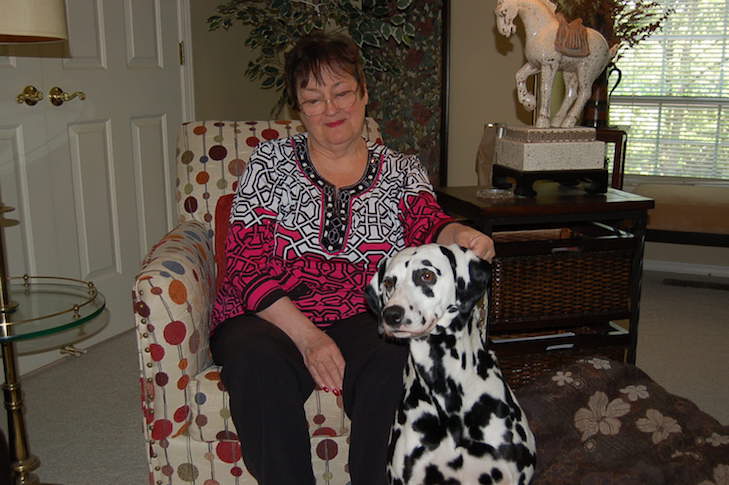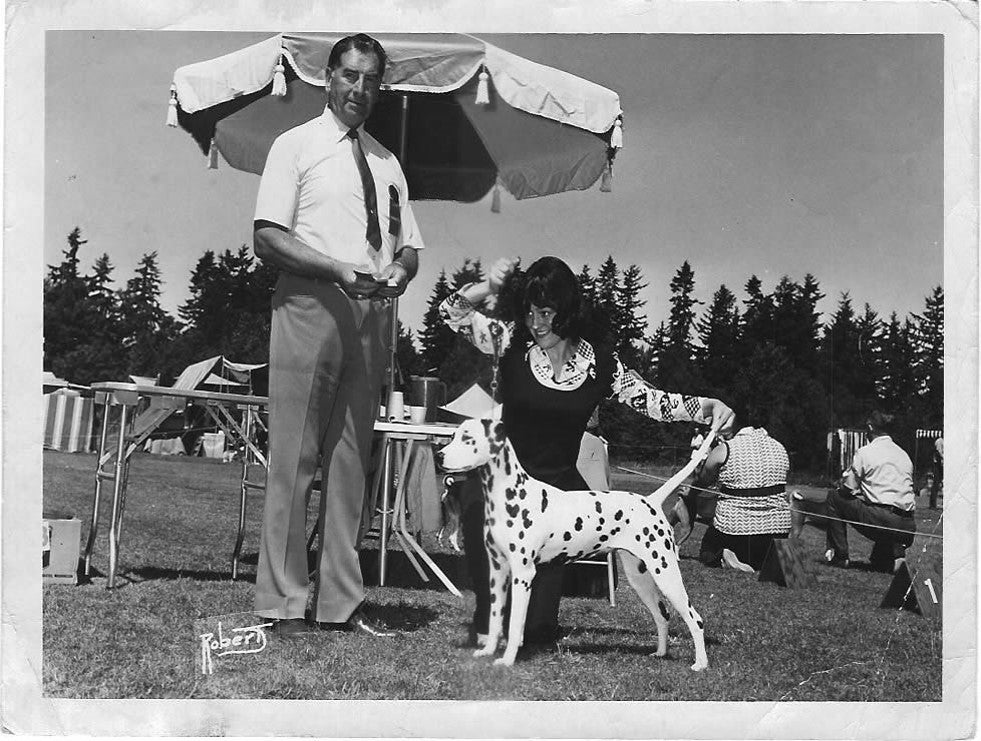
Leopards don’t change their spots, and neither do reputable Dalmatian breeders. Nothing can dampen their enthusiasm for the spotted dogs that have captured their hearts, as well as their couches. Patti Strand of Portland, Ore., has bred Dalmatians with her husband Rod under their Merry-Go-Round (MGR) affix for almost half a century. A former American Kennel Club board member and a judge licensed for Dalmatians and all three Poodle varieties, Strand is an advocate — and her efforts have transcended her own breed. In 1991, she founded the National Animal Interest Alliance (NAIA), a counterbalance to those animal-rights organizations whose anti-purebred rhetoric demonizes all dog breeders, regardless of their care standards or affiliations.
Here, she talks about Dalmatian-loving presidents, the value of experience, and the price of unintended consequences.
In the beginning: Rod and I attended our first purebred event — a puppy match — at a nearby park while we were in college in the late 1960s. What started out as a way to avoid studying on a sunny, spring afternoon has kept us engaged in the dog show world for almost 50 years.
On the other end of the lead: During that puppy match, Penny, our first-ever Dalmatian, proved that she was not a show dog. She was 6 months old and handily beaten by her only competitor.
The person who cemented her love of dogs: Long before I came along, my grandparents, who raised me, had horses, dogs, chickens, you name it. Every Saturday when my grandmother was baking, I’d sit in the kitchen, wide-eyed, listening to her tell stories about Mars, her heroic police dog, or her deceased Pug named Ming, and I’d long for a dog of my own. We had no dogs growing up, just stories about them.
The dog that cemented her love of Dals: Pal was a Dalmatian that lived up the street and used to come to my yard to play. It was the 1940s, and people didn’t always fence in their dogs. Pal was the sweetest — he’d put his head on my shoulder and wag his tail so enthusiastically, I’d have trouble keeping my balance. He was sweet, athletic, and energetic, just like the Dals we breed for today.
History mystery: There are a lot of stories about the origin of the Dalmatian, but no one really knows for sure where they come from. They were documented running with gypsy caravans in the 1600s in Romania and the Dalmatia area, but the spotting factor has been around forever. Some claim that they ran with ancient Egyptian chariots. In this country, George Washington had Dalmatians — his first was a coach dog named Madam Moose. So did Benjamin Franklin. He was the nation’s first fireman and that’s how Dalmatians became associated with firehouses.
Learning curve: When you first start showing, you think everything is political — at least, that’s what everyone tells you. Then, ten years later, you look back at your win photos and think, “Holy cow, how did we win looking like that?” Although it took us a while to get the hang of showing dogs, ultimately, we were very successful in the show ring, breeding more than 100 champions, and top Best in Show, National Specialty, Top Twenty, and Westminster Group winners.

Are you experienced? In the past, many judges were long-time breeders, even though some never bred a good dog. Bad taste, perhaps, but at least their decisions were based in experience. Today, we have a lot of judges who have never bred a dog, let alone a good one. They can be wowed by ads, who won the day before, or by style rather than recognizing something as basic as balance. The Dalmatian, the carriage dog, is supposed to be able to trot all day long with a horse-drawn carriage, and to have that ability and stamina it needs balance and good running gear. If you haven’t bred dogs and haven’t studied them to see how certain things turn out, you won’t have the same priorities as someone who has done real, honest-to-goodness breeding and animal husbandry.
Pet projects: We’ve always recognized that no matter how outstanding your top show dogs are, about eight out of every 10 dogs you breed go to pet homes. So, temperament, overall soundness, and good health have always been our highest priorities.
Going clubbing: Because we’ve been involved in our breed for nearly half a century, we are well known and get calls for puppies continually. Even so, we list in the AKC Marketplace online because we know that people who want a particular breed have a hard time finding a reliable source for reputable breeders. Even if we don’t have a puppy available, we use our Marketplace listing to recommend quality Dal breeders through the Dalmatian Club of America.
Too much of a good — or bad — thing: When Disney released its live-action “101 Dalmatians” movie in 1996, our parent club wanted to protect our breed from the mindless overbreeding that happened to other breeds featured in movies. So, we launched a national campaign with the message that the Dalmatian isn’t for everyone. We enumerated every negative thing about the breed, but didn’t mention the reasons why we love them. It was well intentioned, and it definitely proved that grassroots PR can work, but it absolutely backfired. We lost more than 97 percent of our breed registry in the 10 years following the movie’s release, though the numbers are finally starting to come back.
More shades of gray: At NAIA conferences, we often hear from genetics experts in other animal groups, such as cattlemen. Their industry has a lot more money to spend on finding answers to health problems than we hobbyists do. They stress the importance of using genetic tests wisely, not focusing on one virtue or defect to the exclusion of the whole. This is a challenge I worry about. With a gene pool as small as ours is today, we have to be very careful not to throw the baby out with the bathwater as we select away from known problems. With the best of motives, we sometimes go overboard and wind up shrinking our gene pools further rather than solving the problem.
Parting thought: After all these years, we are still fascinated by the things we learn every day about dogs. When we started, there were very few tools available to help breeders improve their breeds. A problem had to show up in your puppies in order to breed away from it. Now, we have the Orthopedic Foundation for Animals, the AKC Canine Health Foundation, and a host of genetic markers, X-rays, blood screens, and new knowledge in nutrition, dog training, and behavior that we can use to keep our dogs healthy and sound. These advances keep things fresh. There’s always something new to discover, and we feel grateful for our time in dogs!

